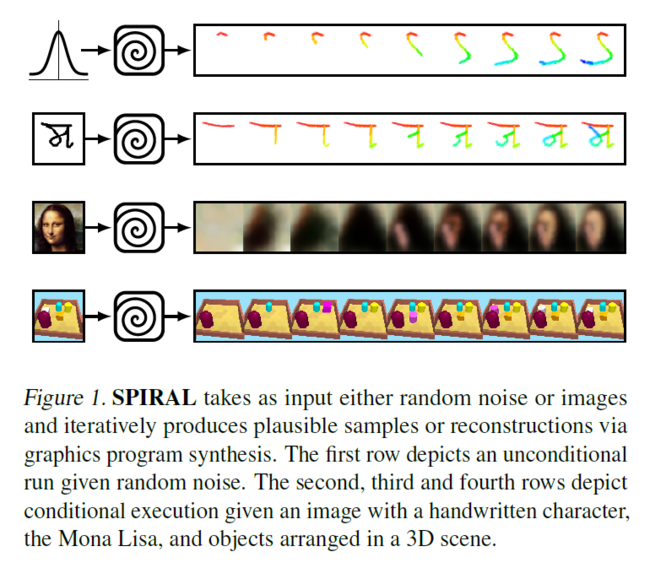Synthesizing Programs for Images usingReinforced Adversarial Learning: Difference between revisions
No edit summary |
No edit summary |
||
| Line 20: | Line 20: | ||
To address these problems, a new approach is presented for interpreting and generating images using Deep Reinforced Adversarial Learning in order to solve the need for a large amount of supervision and scalability to larger real-world datasets. In this approach, an adversarially trained agent '''(SPIRAL)''' generates a program which is executed by a graphics engine to generate images, either conditioned on data or unconditionally. The agent is rewarded by fooling a discriminator network and is trained with distributed reinforcement learning without any extra supervision. The discriminator network itself is trained to distinguish between generated and real images. | To address these problems, a new approach is presented for interpreting and generating images using Deep Reinforced Adversarial Learning in order to solve the need for a large amount of supervision and scalability to larger real-world datasets. In this approach, an adversarially trained agent '''(SPIRAL)''' generates a program which is executed by a graphics engine to generate images, either conditioned on data or unconditionally. The agent is rewarded by fooling a discriminator network and is trained with distributed reinforcement learning without any extra supervision. The discriminator network itself is trained to distinguish between generated and real images. | ||
[[File: | [[File:Fig1 SPIRAL.PNG | 650px|thumb|center|Figure 1: SPIRAL]] | ||
Revision as of 14:56, 23 October 2018
Synthesizing Programs for Images usingReinforced Adversarial Learning: Summary of the ICML 2018 paper http://proceedings.mlr.press/v80/ganin18a.html
Presented by
1. Nekoei, Hadi [Quest ID: 20727088]
Motivation
Conventional neural generative models have major problems.
- Firstly, it is not clear how to inject knowledge to the model about the data.
- Secondly, latent space is not easily interpretable.
The provided solution in this paper is to generate programs to incorporate tools, e.g. graphics editors, illustration software, CAD. and creating more meaningful API(sequence of complex actions vs raw pixels).
Introduction
Humans, frequently, use the ability to recover structured representation from raw sensation to understand their environment. Decomposing a picture of a hand-written character into strokes or understanding the layout of a building can be exploited to learn how actually our brain works. To address these problems, a new approach is presented for interpreting and generating images using Deep Reinforced Adversarial Learning in order to solve the need for a large amount of supervision and scalability to larger real-world datasets. In this approach, an adversarially trained agent (SPIRAL) generates a program which is executed by a graphics engine to generate images, either conditioned on data or unconditionally. The agent is rewarded by fooling a discriminator network and is trained with distributed reinforcement learning without any extra supervision. The discriminator network itself is trained to distinguish between generated and real images.
